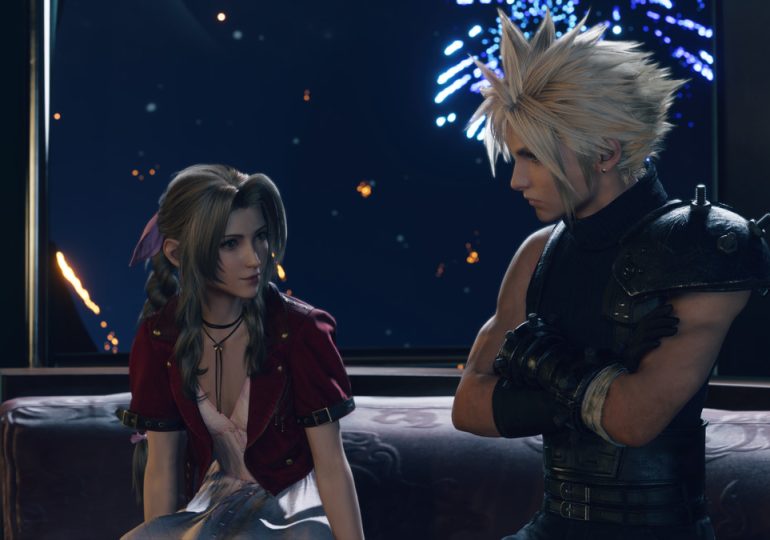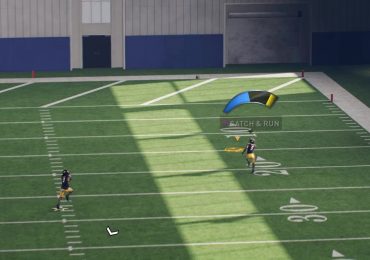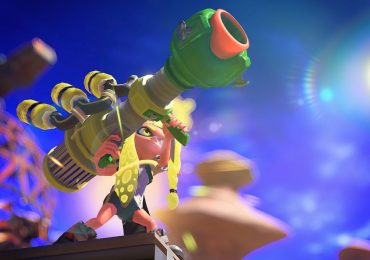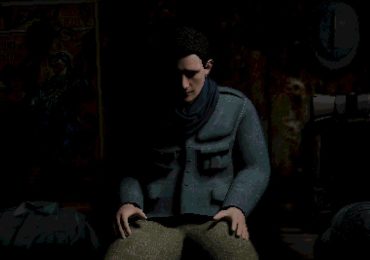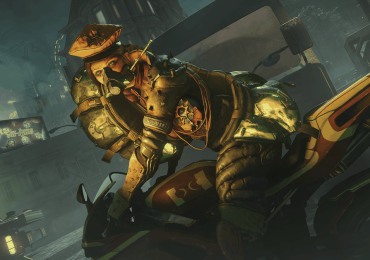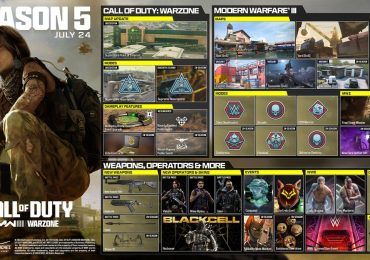I had over two weeks to play Final Fantasy 7 Rebirth, and I spent most of the last seven days asking myself: Do I say that I loved this game, or that I hated it? It’s time to put pen to paper and the truth is, I still haven’t decided. I did love this game; I did hate this game. My waking hours not spent on my day job — over 90 such hours, by the time I saw credits — were nothing but this game. “A Lot” is a reductive but justified way of describing it, in every sense of that phrase.
[Ed. note: This review contains spoilers for the original Final Fantasy 7 and Final Fantasy 7 Remake.]
Final Fantasy 7 — the original — is a game with history. Hell, it’s a game that is History, with a capital H. Widely considered responsible for a huge boom in sales of Sony’s PlayStation when it came out in 1997, it was a three-disc behemoth with then-stunning 3D cutscenes, ridiculously detailed pre-rendered backgrounds, a combat system focused around modular character building through materia, and a mid-game plot twist that is now functionally synonymous with the word “spoiler.”
For people like me who played the original, the ghost of that ultimate spoiler hangs over Rebirth’s head, sword of Damocles style, even more than it did for Remake: “Are they going to kill off Aerith?” Answering that question is a major motivation for even playing the game.
What’s more, every “Compilation of Final Fantasy 7” release has added layers of narrative complexity and explanation to the surprises and twists found in the original. This is a proverbial genie that Rebirth simply cannot stuff back into the bottle. How do you make a Final Fantasy 7 game surprising in a world where Aerith’s death and Cloud’s real identity have been widely available info for over 20 years?
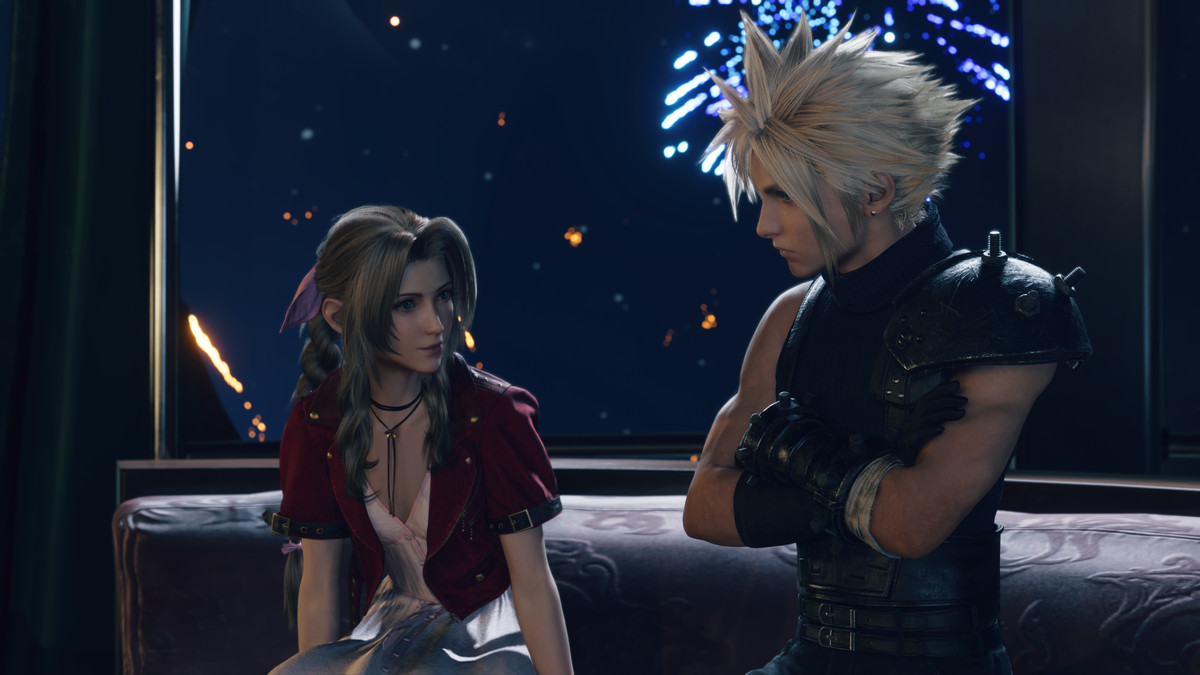
This isn’t a concern for new players, but for returning ones, it’s a big deal, and Remake’s promise was that this new series of games wouldn’t simply be a big-budget, modern retelling, but a new story. After all, the final boss of Remake was, in a manner of speaking, a metaphysical force determined to keep the story going as it was “supposed” to be.
It was the drumbeat question that kept me powering through this immense game, because I really needed to know. Were they going to take this somewhere completely different, or was Aerith’s fate sealed no matter what? My time with the game was full of furious attempts to recall the minute-to-minute gameplay of an RPG I hadn’t played since before some of my current students were born. Which moments were lampshading things that had been changed? Which non-player characters were people I just couldn’t remember? Both Rebirth and I were playing Where’s Waldo with my own nostalgia.
I got my answer in the end, but my concern is that by the time I reached it, I was exhausted. This game is immense, and not always in a good way. As with Remake, I think the most glaring issue with Rebirth is that Square Enix wants, even needs, it to be so huge in scope. Worse, it’s a pseudo-open-world game, meaning that some sins prevented by Remake’s more contained structure are allowed to run unchecked.
It really is a shame, because when the game wasn’t trying to get me to wander the world activating definitely-not-a-Sheikah-tower towers, or win a card game tournament on a cruise ship, or get literally sucked into a nostalgically polygonal RTS board game, or do stealth minigames to capture regional chocobo variants, I was having a good time. If reading that sentence made you feel a little tired, though, imagine how playing the game felt.
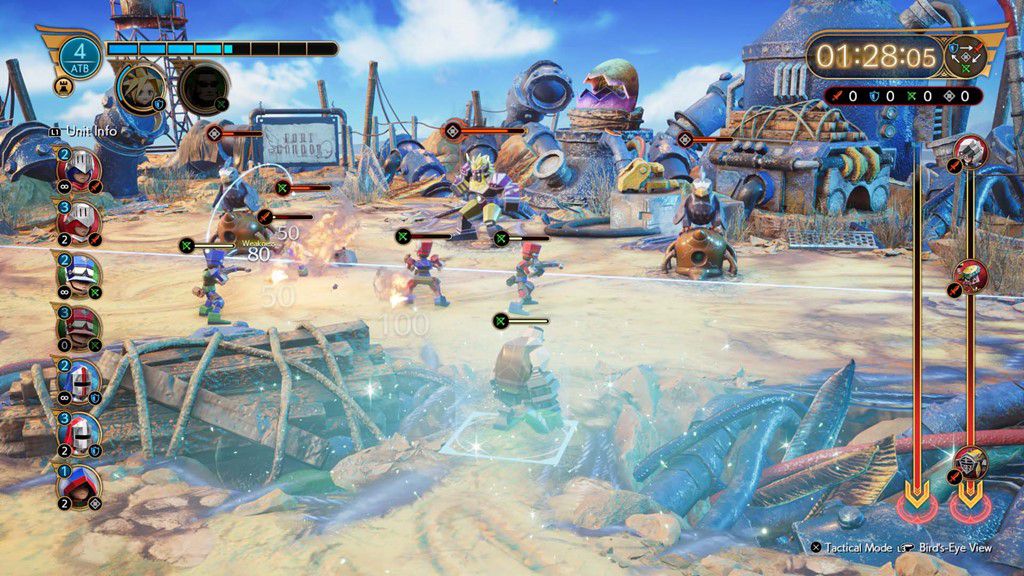
Rebirth’s structure is effectively a series of action-RPG set-pieces connected by a sinew of open-world side-questing and “map activities.” Each new set-piece either introduces a new open-world region or gives you a reason to leave the one you’re currently in. Except for a handful of times when regions are entirely shut off or fast travel is disabled, you are free to wander the countryside and do all the activities you’ve been doing in other open-world games for a thousand years already: fight challenging variant monsters, do side quests for NPCs, explore the map, and play minigames. So, so many minigames.
Even when the original game was new, Final Fantasy 7’s density of minigames was slightly controversial. Rebirth, however, takes it to an entirely different level. Every new mundane task you might be asked to do involves a minigame now; the most egregious example, to me, was when I was asked to do a lock-picking-esque minigame to pick a freakin’ mushroom, testing the pliancy of the thing’s segments so I’d know how to safely get it out of the ground. Seriously, Cloud, just pick up the damn mushroom and let’s go.
Beyond this, many of the minigames from the original FF7 have been given a new and sometimes deeply annoying coat of gameplay paint. The infamous parade-marching game in Junon makes a (not so) triumphant return as a rhythm-game-esque scenario in the vein of Remake’s Honeybee Inn dance number, but with baffling and often difficult-to-see visual cues that make success a challenge, and inputs that aren’t actually on the beat of the music it’s set to.
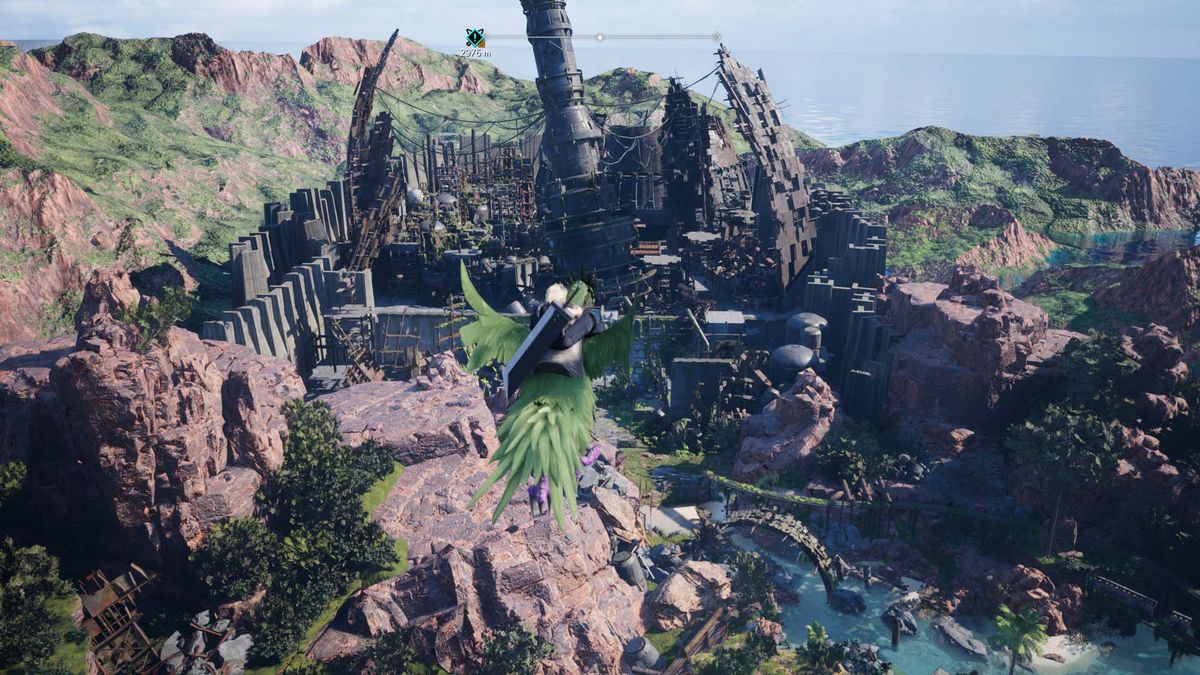
This is Rebirth’s issue in a nutshell. The core narrative beats, the (to borrow a term from the Final Fantasy 14 community) “main story quest” set-pieces, the party banter — all of those are compelling and interesting, but the game is full of modern open-world game design bloat. Nostalgia aside, I don’t think the constant minigames or Ubisoft map-icon cruft add anything of actual substance other than padding out the list of things to do.
Worse, while they can be somewhat ignored, not partaking in the open-world content will eventually leave players underleveled for the main story. Most minigames have combat item rewards — weapons, gear, materia — that can make a difference, but in almost every case those rewards are locked to getting the highest possible score, and for some games, that “highest possible score” means playing making zero mistakes of any kind. So much of my playtime was taken up with sitting at a minigame or VR combat challenge, doing it over and over again to get it perfectly right and nab the prizes. Problematically for Rebirth, a game demanding perfection can be just as exhausting as mindless open-world content. Sometimes more.
At least side quests, which are distinct from open-world busywork, are not terribly numerous and usually enjoyable. Instead of combat rewards, the payout from side quests is time with your party: The “hidden” relationship mechanics from the original game are explicit in Rebirth, and side quests are a major way to build and deepen your relationships. Each side quest (there are between four and six per region) involves Cloud and another party member doing some sort of task and interacting in the process.
I enjoyed this time with the party, because Rebirth retains what was endearing about them from the original and from Remake. The characters remain wholly themselves, but with the additional buttresses of banter, better (or at least more contemporary) writing, and expressive voice acting to flesh them out. Compared to his portrayal in Remake, Barret in particular now feels much more like a person than a walking racial stereotype, and Yuffie remains an enjoyable ninja bomb waiting to go off in someone’s face, much as she was in Remake Intergrade.
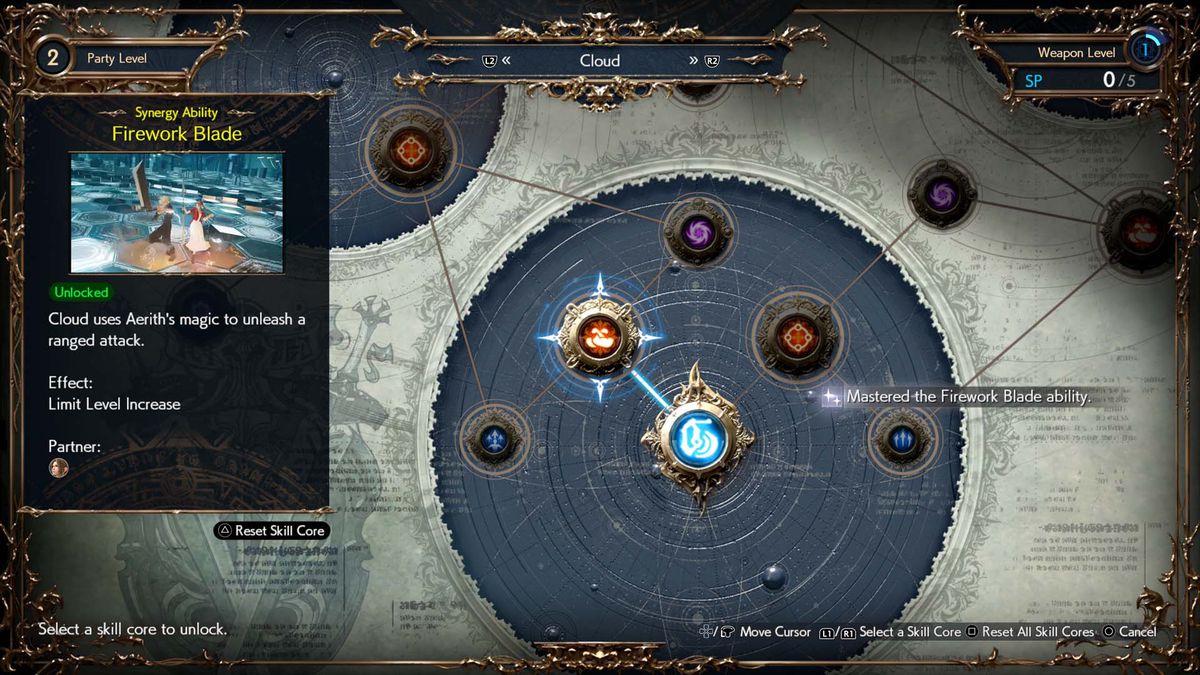
These relationship mechanics also influence the only major change to Remake’s action combat system: synergy skills and abilities. Rather than obtaining major character abilities from Remake’s weapon-based system, which recalled FF13’s Crystarium, each party member has a “folio” similar to FF15’s skill trees, with nodes unlocked using skill points gained by leveling up or by acquiring SP-providing books.
Building and expanding on a similar mechanic found in Remake Intergrade, synergy attacks are unlockable nodes found in these folios, and they involve two party members attacking in tandem for different effects. Synergy skills are freely usable as long as both characters are in the party; synergy abilities are much more powerful but require each party member to have spent a number of ATB segments (three each to start) on other spells or abilities before they can be used.
Synergy abilities in particular are very powerful and extremely flashy and fun (such as the attack where Aerith dons shades to attack with Barret, the hilariously named “Sweet and Sour Salvo”), but their usage requirements are so stringent that they will only see real use in extended fights like boss battles. Still, they added a bit of what dual techs did for another older Square RPG, Chrono Trigger: provide a sense that these characters are an increasingly tight-knit friend group, out to save the world together.
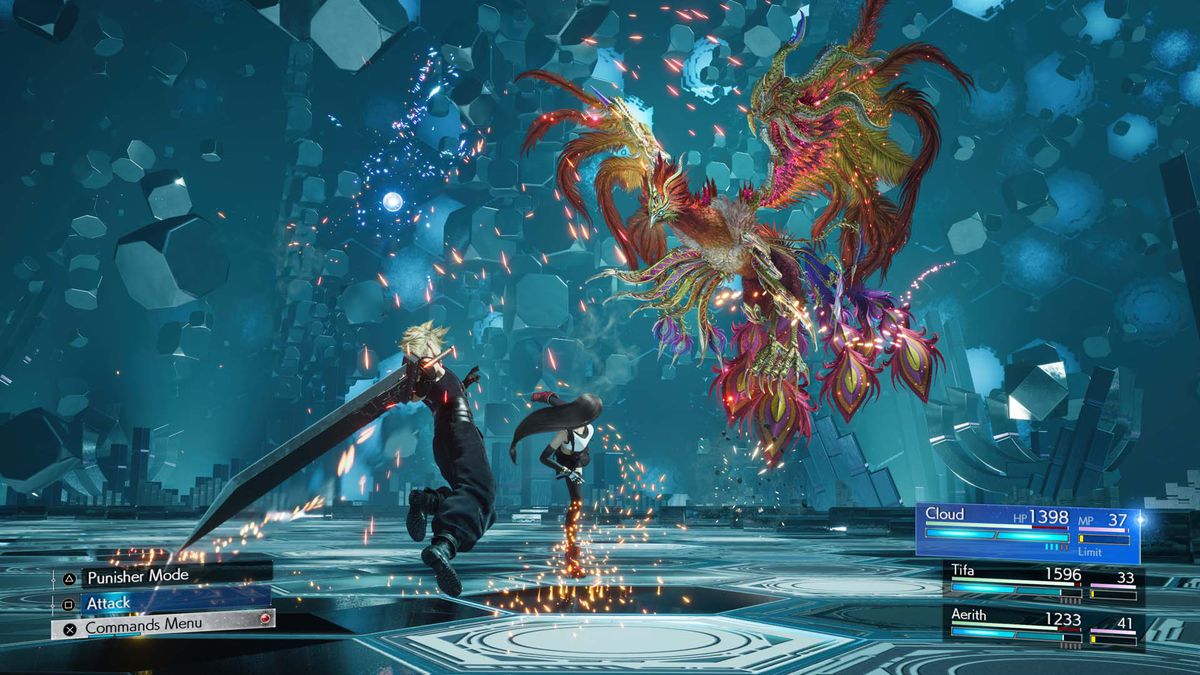
When I finally wrapped up the game — after, admittedly, ignoring endgame side content and powering through directly to the end, as time was running short — I was left with a jumble of conflicting impressions. Rebirth is a gorgeous, cinematic, nostalgic romp with one of the genre’s most iconic sets of characters, in an action-RPG framework that, while sometimes frustrating (dodging has never felt good in these games), is a solid foundation.
Rebirth is also, however, a juggernaut time-sink full of activities that often tried my patience while providing little else. I have to ask myself: 45-year-old me in 2024, with my day job and ancient, tired self, found that content exhausting. Would 19-year-old me, skipping class (unwisely, since I know my students are reading this) to play the original FF7 and being utterly absorbed by its birth-of-a-style newness, have the same reaction?
This is the knife edge Rebirth is walking. The success of Remake suggests that older, returning players brimming with nostalgia are on board, but the level of padding and busy work in Rebirth is magnitudes greater than it was in Remake. Younger or newer players may feel less burdened here — modern open-world games have been doing this for years at this point — but is the game compelling enough on its own without the nostalgia engine driving it?
What I can say is that my time with Cloud and company was as full of annoyed sighs and frustrated groans as it was whooping cheers and teary-eyed laughter: a complex and sometimes contradictory experience. However, in many ways, that conflict is emblematic of a generation of Japanese RPGs that the original helped to usher into the world, and which I played when I was younger with reckless abandon. In that sense, Rebirth continues that legacy into the modern era, flaws and all.
Rebirth is worth your time, but I’m not sure if it’s worth as much of your time as it asks for. It’s a game that does many things right and does right by its weighty legacy — but it also makes it clear that for the future final installment, Square Enix should reconsider how necessary it is for these games to be so big. Rebirth’s most enjoyable and powerful moments come from nostalgic emotions and cinematic style, not from clambering up a radio tower to tick another box on a checklist. A game that has more of the former and less of the latter feels like it would stick the landing the remake series has been trying for.
Final Fantasy 7 Rebirth will be released Feb. 29 on PlayStation 5. The game was reviewed using a pre-release download code provided by Square Enix. Vox Media has affiliate partnerships. These do not influence editorial content, though Vox Media may earn commissions for products purchased via affiliate links. You can find additional information about Polygon’s ethics policy here.
